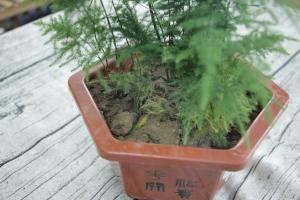How to Plant Fruit Trees in California
California is the perfect place to grow fruit trees due to its warm climate and long growing season. But planting a fruit tree requires some knowledge and effort. Here are the steps you should follow to plant a fruit tree in California:
Step 1: Choose a Suitable Fruit Tree
The first step is to choose a fruit tree that is suitable for the climate in California and the type of soil in your garden. Common fruit trees that grow well in California include oranges, lemons, avocados, and figs. It is important to choose a young tree that is at least two years old and has no signs of disease or insect damage. Choose a variety that is known for producing large and tasty fruit for the best results.
Step 2: Pick the Right Location
The second step is to pick the right location for your fruit tree. Most fruit trees require at least six hours of full sunlight per day to grow and produce fruit. Make sure the location you choose is free from shade and has good drainage. Avoid planting your fruit tree near buildings or other structures that may cast shadows on the tree. Also, make sure the location is protected from strong winds that can damage the tree.
Step 3: Prepare the Soil
The third step is to prepare the soil for planting. Fruit trees require well-draining soil that is rich in nutrients. Add organic matter like compost or manure to the soil to improve its structure and fertility. Dig a hole that is twice the size of the tree's root system and fill it with the prepared soil. Make sure the hole is deep enough to allow the entire root ball to be covered with soil.
Step 4: Plant the Tree
The fourth step is to plant the fruit tree. Gently remove the tree from its container and inspect the roots. If the roots are tangled or circling, trim them with a clean knife to encourage new growth. Position the tree in the center of the hole and fill the hole with soil. Water the tree thoroughly to help settle the soil around the roots.
Step 5: Care for the Tree
The final step is to care for the fruit tree to ensure its growth and fruit production. Water the tree regularly, especially during the warm summer months. Apply a balanced fertilizer in the spring and fall to provide the tree with essential nutrients. Prune the tree annually to remove dead or damaged branches and to shape the tree for maximum fruit production.
In conclusion, planting a fruit tree in California requires some effort and knowledge, but the results are worth it. Follow these steps to ensure the best possible growth and fruit production for your fruit tree.

 how many times do yo...
how many times do yo... how many planted tre...
how many planted tre... how many pine trees ...
how many pine trees ... how many pecan trees...
how many pecan trees... how many plants comp...
how many plants comp... how many plants can ...
how many plants can ... how many plants and ...
how many plants and ... how many pepper plan...
how many pepper plan...































